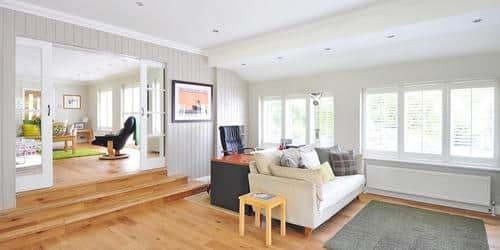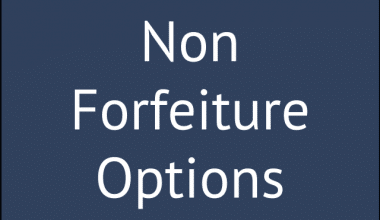Dwelling coverage (Coverage A) is part of your homeowner’s insurance policy that pays for repairs to your home’s physical structure. The amount of dwelling coverage you require is determined by the replacement cost of your home. Here, we’ll see how dwelling coverage differs from home insurance and how to calculate it.
What is Dwelling Coverage?
Dwelling coverage is the portion of a homeowners policy that pays to repair or rebuild your home’s structure if it is damaged or destroyed. Dwelling insurance will cover you up to the policy amount.
The roof, foundation, flooring, doors, windows, and walls make up the construction of your home. It typically extends to anything attached to the structure, including garages, porches, decks, and built-in appliances and fixtures. It does not, however, include your belongings, detached structures (such as a shed), or the ground on which your home is built.
Dwelling coverage works differently in a condo insurance policy. Because most condo owners own only their unit and not the building, your policy’s dwelling insurance does not need to cover items like the roof or outside walls. However, depending on what your association’s master insurance covers, you may want dwelling coverage for your unit’s built-in cupboards, appliances, and floors. Find out more about condo insurance.
Because it is frequently the first form of coverage specified in a homeowners policy, dwelling insurance is also known as Coverage A.
What Aspects of My Home are Covered by Dwelling Insurance?
Dwelling coverage covers the following aspects of your home:
- Foundation
- The frame, the walls, the flooring, and the windows
- Roof
- The fireplace and the chimney
- HVAC, plumbing, and electrical systems
- Sinks, tubs, showers, and cabinets are examples of built-in fixtures.
- Installed appliances such as your furnace and water heater
- Garage attached
- Deck and porch
- Other elements of your home’s insurance policy protect personal belongings inside your home as well as structures that aren’t immediately related to your home.
What Does Dwelling Coverage Include?
According to the Insurance Information Institute, dwelling insurance protects your home and built-in systems from the following risks (also known as hazards):
- Smoke and fire
- Lightning bolts
- Hail and wind
- Ice, snow, and sleet weight
- Burst pipes or appliance overflows cause water damage.
- Plumbing, heating, and air conditioning systems that have frozen
- Theft and vandalism
- Objects that fall
- Explosions
- Riots
- Damage from an aircraft or vehicle
- Eruptions of volcanoes
If any of these risks harm the structure of your home, you may file a claim with your insurance carrier to be reimbursed for the damage – up to the dwelling coverage level in your policy.
What is Not Covered by Dwelling Coverage?
Dwelling insurance does not protect your home from all risks. The following are some policy exclusions that are not covered by dwelling insurance:
- Flooding
- Earthquakes, mudslides, and landslides
- Infestations such as termites, rats, bed bugs, and other pests
- Mold
- Backup water from your sewer or sump pump
- Service offerings
- Sinkholes
- Normal wear and tear
- Problems with maintenance
- Intentional damage performed by a home member
- Homes that have been empty for more than 30 to 60 days
How Much Dwelling Coverage Do I Require?
It may appear difficult to estimate how much home insurance you require, but there are some basic measures you can follow to get a preliminary amount.
- Understand the difference between market value and replacement value: The amount you bought for your home isn’t always the amount you’ll insure it for. Home prices can be artificially raised or lowered depending on factors such as the location of the home or the health of the housing market. What you actually want to know is your home’s replacement cost, or how much it will cost to rebuild your home after a total loss.
- Consider the size of your home: larger properties will usually require more coverage because they cost more to rebuild than smaller homes. Similarly, homes with finished basements will almost certainly require more dwelling coverage to account for the added space.
- Consider the features of your home: Each home has its own set of features. Builder-grade homes, for example, will most likely require less dwelling coverage than comparable-sized upgraded or bespoke homes with high-end finishes.
- Consider the age of your home: Due to non-standard lumber sizes or antiquated building practices, older homes may be more expensive to repair or reconstruct.
Although having an idea of how much home insurance you require might be useful when obtaining estimates, don’t allow calculating that figure to stress you out. Each insurance provider has its own replacement cost estimate that will assist you in determining the appropriate amount of coverage. Keep in mind that more dwelling coverage usually means a higher home insurance premium.
Types of Dwelling Coverage
There are numerous policy types available for dwelling insurance. Some apply to single-family homes, while others apply to condos and other forms of property.
#1. Homeowners Insurance Dwelling Coverage
Dwelling coverage is included in almost all property insurance plans, including HO-1, HO-2, HO-3, HO-5, and HO-8 policies. That means that if you get home insurance, you are almost certainly purchasing dwelling insurance as well.
Your home insurance policy may be referred to as hazard insurance by some insurers. This is not a distinct policy. Hazard insurance is a catch-all word for home insurance. It refers to the coverage for certain hazards that you get when you purchase your insurance. Dwelling coverage, other structures coverage, and personal property coverage are all included in hazard insurance.
#2. Condo Insurance Dwelling Coverage.
Condominium owners are protected under HO-6 policies. In this area, home insurance is a little more complicated. Your HO-6 coverage should cover the interior of your home, your personal belongings, and your liability needs. The majority of the structure should be covered by your association’s master policy. Each condo association, however, has its own master policy, which will determine how much dwelling coverage you need to purchase on your condo policy. For example, your condo association may cover practically the whole construction of your condo, allowing you to pay less dwelling insurance.
#3. Rental Property Insurance Dwelling Coverage
If you have a rental property, you should think about rental property insurance and understand how it works. This insurance policy, also known as a DP-3 policy type, contains dwelling coverage to protect the structure of your rental property in the case of a covered loss, but it also includes many coverage alternatives not found in a regular HO-3.
Because landlords face different risks than homeowners, rental property insurance accounts for this with coverage alternatives such as wrongful eviction and loss of use. Furthermore, because many cities and states have their own rental rules, speaking with a local insurance agent to learn more about rental properties in your area and what additional coverage options they offer can be beneficial.
How Much Does Dwelling Coverage Cost?
Because it covers the largest building – your home — dwelling coverage takes up the majority of your home insurance policy, making it one of the most expensive coverages. In general, the more your dwelling coverage, the higher your home insurance prices.
Let’s look at the average cost of homeowners insurance in the United States depending on various dwelling coverage limits, as determined by our research of 2023 prices from around the country.
| Dwelling converge limit | Average annual cost |
| $100,000 | $946 |
| $200,000 | $1,442 |
| $300,000 | $1,899 |
| $400,000 | $2,481 |
| $500,000 | $3,066 |
What Factors Influence Replacing Cost?
The cost of replacing your home is determined by several factors, including:
- Construction and labor costs in your area
- The square footage of your home
- Your home’s age
- the number of rooms
- Architectural design
- Count of stories
- Recent improvements
- Unique characteristics in your home
How Do You Calculate Dwelling Coverage?
To quickly calculate dwelling coverage for your home, multiply the square footage of your home by the average cost per square foot to build in your area.
Because building and labor expenses might change, particularly in today’s market, you should consider purchasing one of the following extended dwelling coverages to ensure you’re properly protected:
- Extended replacement cost: To compensate for a potential increase in building or labor costs, extended replacement cost coverage increases your dwelling coverage limits by 20% to 50%.
- Guaranteed replacement cost coverage pays up the full cost of rebuilding your home, regardless of your coverage limits, making it the most expensive type of home coverage.
How Do Claims Work When You Have Dwelling Coverage?
If a covered incident destroys the structure of your home, you can file a dwelling coverage claim with your home insurance company to be reimbursed for the losses.
Most insurance providers let you file a claim either online or by phone. Typically, you’ll need to produce documentation of the damage before your insurance sends an adjuster to your home to analyze the situation and calculate a settlement figure.
Your claim payout amount will be subject to your home insurance deductible, which is the amount you must pay out of pocket before insurance will cover the rest. The majority of deductibles vary from $500 to $2,000.
Is Dwelling Coverage Required?
While dwelling coverage is not required by law, most mortgage lenders need you to acquire homeowners insurance (including dwelling coverage) before they can grant you a loan. This is due to the fact that they have a financial stake in your property until you completely pay off your mortgage, and they want to guarantee that their investment is adequately safeguarded.
Is Dwelling Insurance Required If I Rent My Home?
Probably. If you own a home that you rent out, you’ll still need a policy, known as a dwelling fire or landlord insurance, to provide you with dwelling coverage, among other benefits. You are not required to get insurance if you do not have a mortgage on your home, but it is usually a smart idea. If you don’t have insurance, you’ll be on the hook for any home damage, as well as any liability claims and lawsuits. As a result, most insurance agents recommend that you purchase coverage even if you own the home outright.
If you own a rental property, how much dwelling coverage do you need?
Because most homeowners insurance companies will not cover a loss if you have rented out your home to someone else, it is critical to seek landlord-specific dwelling coverage. This coverage, unlike standard homeowners insurance, does not cover your renters’ items. They will need to obtain their own renter’s insurance policy for this purpose.
When looking for landlord insurance, seek policies that include the following:
- Coverage for structural damage caused by the same perils as standard dwelling coverage.
- Coverage for your own personal property, such as appliances or lawn equipment, used in the process of maintenance or for tenant usage.
- Liability coverage in the event that a renter or a guest is injured on the property.
- Coverage for rental income lost if the property cannot be rented during repairs or redevelopment.
Expect to pay higher rates for landlord plans, which are typically 25% higher than standard homeowners policies. Compare insurance quotes from at least three different insurance companies to discover the cheapest rates.
Dwelling Coverage FAQs
What is the difference between dwelling insurance and homeowners insurance?
A dwelling coverage just covers the home’s physical structure. Homeowners’ insurance coverage is more comprehensive, covering not only the physical structure of the home but also its contents.
How do you calculate dwelling coverage?
To quickly calculate dwelling coverage for your home, multiply the square footage of your home by the average cost per square foot to build in your area.
What is Coverage B in homeowners insurance?
Coverage B, commonly known as “other structures insurance coverage,” is a component of your homeowners’ policy that protects structures on your property that are not directly attached to your home, such as a detached garage, storage shed, or gazebo.
Related Articles
- AVERAGE HOME INSURANCE COST: Best 2023 UK Practices and Rates (Updated)
- NEW HOMEOWNERS TAX CREDIT: What It Is And The Eligibility
- PERSONAL LIABILITY COVERAGE: Definition, Cover & How Much You Need
- CONDOMINIUM INSURANCE: Coverages and Policies In 2023
- HO5: Overview, Policy forms, Charts & Insurance Guide






